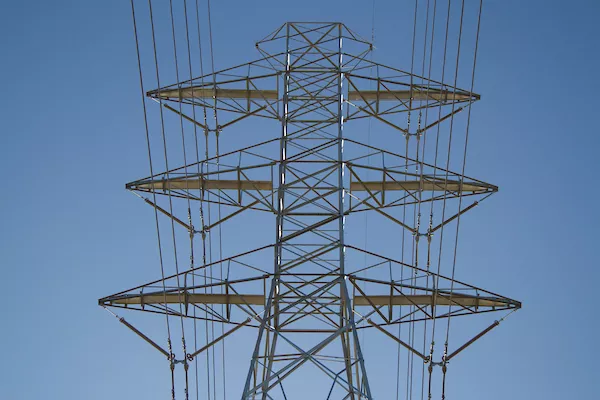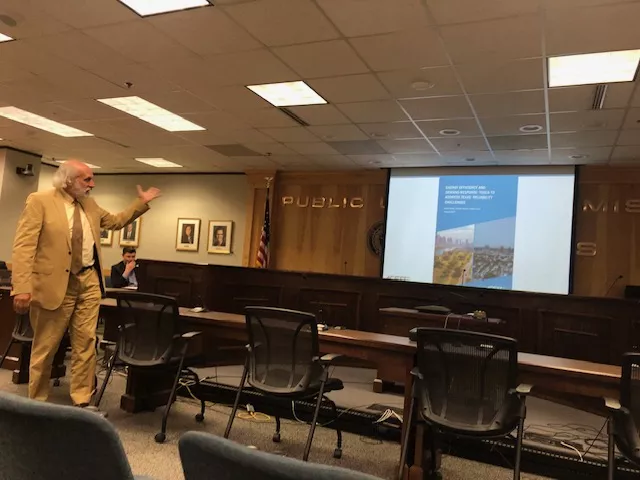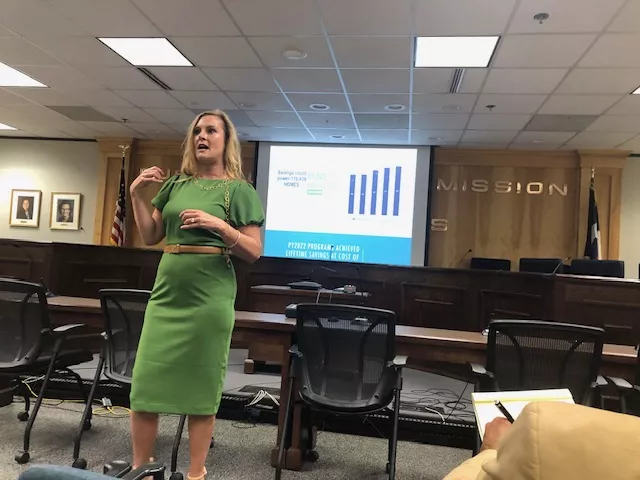
Photo by Al Braden
By Cyrus Reed
Since Winter Storm Uri, organizations like the Sierra Club have had a pretty simple message for Gov. Greg Abbott, the Texas Legislature, and the Public Utility Commission:
Don’t ignore the demand side (and demand-side solutions).
To put it in simple terms, yes we absolutely need more energy supply to meet our electricity needs, fueled by population and industrial growth, and climate extremes that make very hot and very cold temperatures more frequent, but…. If we only focus on the supply, we are missing the cheapest alternatives like energy efficiency and demand response (literally turning down energy use at peak times when the grid gets stressed).
Indeed, increasing summer and winter peak demands have made it clear that it is primarily the heating and cooling of older homes and apartments that is driving our highest demand.
No one can say the Sierra Club hasn't tried.
In 2022, we submitted a rulemaking petition to increase our very low energy efficiency (and demand response) goals that private utilities like Oncor, AEP Texas, and Centerpoint Energy must meet.We were told no, but wait.
We then went to the Texas Legislature with three major demand side bills. We helped pass SB 258 by Sen. Sarah Eckhardt through the Senate, but it ran up against opposition in the House. We helped pass SB 1699 in the House and Senate (and signed by the Governor) which included some requirements for both distributed energy resources (like onsite solar and storage) and residential demand response. Then there was SB 2453, which passed the House and Senate but was vetoed by Abbott. It would have required the State Energy Conservation Office to restart rulemaking to adopt the latest and greatest energy codes for new construction (those saving future energy use).
Well we are back at the PUCT, and while we can’t say they are about to approve a bold new plan for energy efficiency, we do have some reason to be slightly optimistic that our message is finally gaining some attention. The PUCT held a special meeting in September on energy efficiency known as the EEIP (Energy Efficiency Implementation Project). While that itself is normal, at this meeting the presentations pointed to the need to do more as a state facing real electricity concerns, both with rising costs and rising use. A number of the meeting presentations can be found here, under Project 38578. To see the full proceeding on video you can go here.
During the meeting ERCOT (our grid operator) announced they have hired Texas A&M electrical engineering professor Dr. Le Xie, who has expertise on modeling and control of electric energy systems, integration of renewable variable energy resources, and significant experience on demand response systems, to look at ways that ERCOT could be better incentivizing and incorporating demand response, onsite solar and onsite storage into our grid operations, hopefully allowing more residential, commercial, and industrial customers to provide local energy solutions to the market. A preliminary study is expected by the end of the year, probably focused on the growing Houston area.
Second, NRG presented on ways to help jumpstart the requirements of SB 1699, which call on utilities to work with retail electric providers like Reliant and Green Mountain Energy (owned by NRG) to install smart thermostats and offer incentives to get consumer to be paid to turn down (or up) their thermostats. Some utilities already have programs, while others like Texas New Mexico Power and AEP Texas are still in the beginning stages of designing them.
Later, Dr. Steven Nadel, Executive Director of the American Council for an Energy Efficient Economy, was given the floor to present a fascinating study of 10 measures -that Texas could take to significantly lower bills and increase resiliency. Overall, the 10 measures could reduce summer peaks by more than 15,000 Megawatts (MW) and winter peaks by more than 25,300 MW for a fraction of the cost of building new gas plants. The total cost for all 10 programs would be about $1.2 billion a year for seven years - about six times what utilities are currently spending and about $7 per month on the average bill. A smaller program of $500 million per year (and about half the measures) would get us about 60 percent of the way there, and would be very similar to Sierra Club’s rulemaking petition which called for spending about $3.50 per month on the average bill for energy efficiency.Most utilities are only spending about $1 per month.

Dr. Steven Nadel, of ACEEE, lays out a bold plan to spend $1 billion per year in Texas and drive peak demand down more than 15% in the summer and 25% in the winter.
Finally, consultants hired by the PUCT and the utilities presented their own results and plans for the upcoming year. The good news is that utilities are (of course) busting through the very easy to achieve low Texas goals, and in 2022, they reduced total demand by about 600 MW through the programs. Those programs also saved Texans some $66 million on energy bills because of the programs.
There is promising news that many utilities like Oncor and CenterPoint Energy have plans in place to expand programs like incentives for heat pumps and smart thermostats. Speaking of which, the State Energy Conservation Office discussed how they plan to spend up to $700 million in home and apartment rebates for heat pumps and other energy efficiency measures courtesy of the Inflation Reduction Act, but only if Comptroller Glenn Hegar gives permission to apply. Applications are due next summer but imagine the $127 million that our utilities spend today being buttressed by $700 million in federal funds and you are talking about a real energy efficiency program!

Lee Lark with Tetra Tech, hired by the PUCT to annually review the utility energy efficiency programs, discusses the results from 2022.
And what of the Sierra Club itself?
Here’s our good news. We intervened in both AEP Texas and Oncor Electric’s 2024 energy efficiency plan, and while we did not force major changes, we did settle with the utility giants and we’re being given two important opportunities. One, to meet with their energy efficiency contractors and talk about how to improve outreach to the communities that most need their help and two, to sit down with the utilities and research potential additional residential energy efficiency and demand response programs that we will present next year at a future EEIP meeting. We expect that work to start next month!
Speaking of the PUCT, interim Chair Kathleen Jackson attended the meeting and made one important announcement: she is working with staff on a new website where Texas electric customers can find out about how to access energy efficiency programs and other opportunities to save energy and money. They expect to roll out the new website soon.
Next week, we will be talking more about it at the Gulf Coast Power Association annual meeting. Sierra Club will be participating in a panel discussion on energy efficiency and demand response with Chair Jackson, Sen. Nathan Johnson of Dallas, and several others. Stay tuned for more.